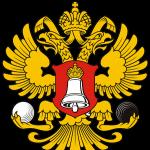The manager of the affairs of the Jewish Community of Lübeck, Zoya Kanushin, took the seat of a deputy from the CDU in the city parliament of Lübeck, thus becoming, perhaps, the first Jewish immigrant from Russia to enter the city parliament...
The manager of the affairs of the Jewish Community of Lübeck, Zoya Kanushin, took the seat of a deputy from the CDU in the city parliament of Lübeck, thus becoming, perhaps, the first Jewish immigrant from Russia to enter the city parliament.
Zoya Kanushin has been on the board of the city organization of the CDU since 2005. In addition, she is the deputy chairman of the Democrats. “Actually, there shouldn’t be anything unusual about this, but for now it’s still rare,” says Oliver Fraedrich, spokesman for the city’s CDU parliamentary faction. “We also hope that with Zoya Kanushin the Jewish community will become closer to the Lübeck public.”
This 65-year-old woman has more than ten years of experience in Germany as a social worker, so in the city parliament Zoya Kanushin would like to deal primarily with the problems of low-income Jewish immigrants and cultural issues.
Isn’t this a contradiction: a “Russian” Jew and the Christian Democratic Union? Kanushin does not think so and says that during the internal party election campaign for a seat in the Lübeck parliament, she received support from all sides. How do members of the Jewish community feel about Zoya Kanushin’s political career in the Christian Democrats? “There’s nothing special about this,” says one of the community members, Eduard
Stelmakh. “My daughter, who lives in Estonia, is also a member of the party with a Christian bias.” But not all of the 780 members of the Jewish community feel this way: some of them are unhappy that the community manager has joined a party whose name contains the word “Christian.” True, Zoya Kanushin herself says that no one expressed such criticism to her face.
Zoya Kanushin is an example of the successful integration of Russian-speaking Jews into German society. She is at the very center of this society. This became possible, first of all, thanks to her good command of the German language, which Zoya, being a translator from English and Italian, learned on her own. And, of course, thanks to the experience of working in Germany. Soon after the family arrived in Rostock along the Jewish line in 1990, Zoya Kanushin found work - she began to provide social services for her fellow countrymen. At the time, her family lived with other Jewish immigrants in
hostel in Gelbenzand, a village of 2,000 people 15 km from Rostock. In 1992, right-wing extremist youth attacked a hostel in nearby Lichtenhagen. But this outburst of hatred towards foreigners could not shake Zoe’s confidence that they did the right thing by coming here. “Anti-Semitism exists not only in Germany,” says Kanushin, “it is also present in
Zoya Kanushin moved to Lubeck with her husband and son in 1993. Shortly before that, she received a position as a social worker at the Jewish Community of Hamburg, but her immediate place of work was Lubeck. There was a lot of work awaiting Zoya. There was a time,
when she dealt with the social needs of all contingent refugees in Schleswig-Holstein. At the age of 50, she passed her license and began to travel all over the federal land, resolving the problems of her charges.
During the “rebirth” of the Lübeck Jewish Community in 2005, she became the community's manager and one of its two full-time employees. At the same time, Zoya is not a religious person. In Lübeck, for the first time in her life, she crossed the threshold of a synagogue. When people from
communities asked her for advice on certain religious issues - which happened often in the early years, when Lubeck did not yet have its own permanent rabbi - she could not help them. Zoya Kanushin received an idea of Judaism only thanks to the Hamburg rabbi Barzilai, for whom she translated in Lübeck.
Kanushin joined the CDU in 2003. She justifies her decision as follows: “After the experience with socialism and communism gained in the Soviet Union, I am done with left-wing parties.” In her native Moscow, Zoya worked for more than 20 years as a translator in
"Intourist". The employees of this state tourism company, who had constant contact with foreigners, were asked why other members of the Jewish community shunned municipal politics. Kanushin replied that many preferred to remain in the shadows. And the language barrier plays a role - after all, the community consists mostly of older people who are embarrassed to speak German. But in general, in her opinion, the desire to conduct a dialogue is lacking on both sides - both visitors and
native inhabitants of Lübeck. Zoya Kanushin is an exception, and not only in her community. “As a resident of this beautiful city, I consider it my duty to work for the benefit of all the inhabitants of Lübeck,” she declares proudly, emphasizing that she intends to advocate not only for Jewish immigrants.
M. Biltz-Leonhardt, M. Fried, "Jewish Newspaper"
Depopulation of Jewish communities began in Germany
(In the margins of recent statistical data)
Pavel Polyan- especially for Demoscope
Not long ago, the Central Jewish Benevolent Organization in Germany (ZBOEG) published a statistical handbook on German communal Jewry in 2006.
Nothing special, just an annual routine.
What is special here is that 2006 itself is the last year of the positive balance of 17 years of Jewish immigration from the former USSR to Germany. This balance, as will be shown below, would have been negative even now, but the role of a statistical lifesaver was played not by anyone, but by 1912 members of a dozen liberal communities in Germany, united in two land unions (Schleswig-Holstein and Lower Saxony), adopted in 2006 into the not very friendly bosom of the Central Council of Jews in Germany (CSEG).
A few words about the liberal communities themselves. First of all, their small size is striking - on average 159 people per community (versus 1,126 people in “conservative” ones).
But the point, most likely, is not in their many times less popularity locally, but in their, so to speak, greater adequacy: members of liberal communities really have a confessional attitude towards them, while the overwhelming majority of members in the remaining 94 communities, from a confessional point of view, are fictitious and exist only on paper.
The 2006 statistical balance is a fly in the ointment. On the one hand, there are 107,794 people in the Jewish communities of Germany, or 177 new members more, but on the other: whenever the aforementioned 1912 liberal Jews came out of the statistical shadow (some of them may have been registered twice) - the balance was would be negative and would be “-1740” people.
Let us recall that, starting from 1991, the balance was only positive and practically did not fall below the mark of 2 thousand people (and even then in 2005).
The dynamics of the number of German Jewry itself consists of three components. The first is purely demographic (natural population movement), the second is migration (mechanical movement) and the third is spiritual (the religious attractiveness of Judaism):
If we are obliged to take all other figures from Frankfurt statistics on faith, since there are simply no alternative sources of statistical accounting, then the situation here is different. The number of new community members - immigrants from the b. The USSR, equal, according to statistics, to 1971 people, cannot possibly correspond to reality.
The fact is that the number of people who arrived in Germany through the Jewish line (from among those who were still eligible to take advantage of the old immigration regulations) amounted to only 1,079 people in 2007 - also a record low. Analysis of community-by-community data leads to the conclusion that among the 1,971 declared people, the majority are clearly from the immigrant population of 2005 - namely, those whose affairs, according to the established regulations, were being checked by the same TsBOEG for the purity of their Jewish affiliation.
Thus, we are faced with another artifact - artificially “delayed” or statistically “postponed” immigration. It became the second fig leaf of the “positive” balance of Jewish immigration in 2006.
The second international stream covers all other countries of the world, except for the countries of the former USSR. In 2006, 229 of them came to Germany and registered with communities, while 282 people left in the opposite direction. The balance is negative, although small - 53 people. As for internal migration, which seems to be associated only with a change of communities when moving, the scale here is completely different: 701 people arrived in Jewish communities and 2,411 people left, there is a colossal difference of 1,710 people. In 2005, for example, the corresponding figures were only 496, 924 and 428.
In 2006, the process of Jewish depopulation actually began in Germany. Both liberal replenishment and “deferred immigration from the former USSR”, carried over from 2005 to 2006, are for her no more than two one-time factors that somewhat softened the blows. An analysis of the structure of the real dynamics no longer leaves any doubt: if previously it was still possible to talk about inhibition or a temporary suspension of Jewish immigration from the former. USSR, now there is evidence of its accelerated collapse.
Depopulation itself, of course, is not universal, but selective.
At the same time, the geography of the positive dynamics in the number of Jewish communities, if we ignore the 12 newly recognized liberal communities, is quite expressive - these are mainly the southern and eastern lands (without Mecklenburg-New Pomerania and Saxony-Anhalt).
This is due, firstly, to the policy of preferentially sending new immigrants upon their arrival to the east, as well as to the special attractiveness of Baden-Württemberg and Bavaria and the tendencies of secondary intercommunal redistribution of immigrants. The maximum increase was recorded in Brandenburg (+13.8%), followed by Württemberg (+9.8) and Thuringia (+8.9), then Saxony (+5.6), Baden (+4.6%), and also Bavaria and Munich (0.7-0.9%).
I deliberately did not provide a figure characterizing the dynamics of the members of the Hamburg community. I didn’t bring it because it is truly phenomenal and unbelievably great! If at the beginning of 2006 there were still 5,125 people in it, then at the end there were 3,086 people, or 2,039 people less! In one year, the population of one of Germany's largest communities decreased by 39.8%, or two-fifths! This 40 percent subsidence of Hamburg is perhaps the main statistical sensation of the year (although, in fact, it is also nothing more than a statistical artifact!).
The lion's share of the decline was due to two factors: transition to other communities (1,253 people) and leaving Judaism (677 people). It is impossible to find these “other” communities using statistics for 2006, but using statistics for 2005 it is possible.
It was in 2005, after many years of struggle, that an entire land union spun off from the city community of Hamburg - the Jewish communities of Schleswig-Holstein.
If you trust the statistics as such, then Hamburg alone accounted for about two-thirds of the total number of confessional “renegades” who left Judaism in 2006. Of course, both in Hamburg and in Germany there are among them genuine renegades, or converts, who switched to other confessions or sects for fundamental spiritual reasons (Baptist missionaries and from the “Jews for Christ” movement are especially active and often successful here). It's their choice and their right. There are also those who, parting with Jewish confessionalism, are breaking not with religion, and certainly not with the people, but with specific communities where they live. Those insults, scandals and other delights that many of them had to face over the years of membership (and the vast majority of communities did not skimp on this at all) pushed them to a certain distance from the actual communal Jewish life.
The new side of the process recorded by statistics, it seems, is still in a different way - in a purely material aspect, or rather, in its intensity. Those newly arrived members of the communities who were willing to belong to them and even support them, but only at a minimal level that was not financially burdensome for themselves, pulled away from the communities. And if they were still willing to pay a moderate community tax, established by the communities themselves (considering it as their material tribute to Jewry and intuitively believing that their passive membership was not worth more), then the German church tax to the coffers of the Land Ministries for Religious Affairs - already No. This would be too much for them - both psychologically and economically, especially since legal demands to pay it may include arrears for several years. Independent, but far from wealthy people, often balancing on the brink of work and unemployment, they are not so pious and not so firmly on their own two feet that they do not think about the role of this tax in their budget. Many, by the way, first learned about this from the bulletins of their communities, which strictly indicated the need for community members to pay the church tax due from them - before that no one had directly demanded this, so many had never heard of it at all.
But some of those who are not threatened by the church tax in any way (the elderly, the unemployed and social workers) also seem to vote with their feet: for this they are deregistered in the communities in the form of moving (real or fictitious), but after that no longer Jewish communities no longer join (it is possible that even modest community fees - in the absence of feedback - are still costly for them). Let us remind you that this particular leak has a negative balance of 1710 people! – was the highest in 2006.
It seems that statistically we are faced with a “burst pipe” phenomenon, which in the future may have an impact on Jewish community building in Germany that is perhaps no less significant and no less negative than the catastrophic balance of births and deaths.
It is symptomatic that it is precisely the most active and independent, economically active (compared to those who remain in them, of course) members who enter into divorce proceedings with communities. They replenish the already large part of post-Soviet Jewry, which from the very beginning did not join the communities and which both in Berlin (Central Council of Jews in Germany) and in Frankfurt am Main (ZBOEG) were not seen at all , they don’t see and don’t want to see.
Mitgliederstatistik der einzelnen Jüdischen Gemeinden und Landesverbände in Deutschland per 1. Januar 2006. / Hrsg. von Zentralwohlfahrtstelle in Deutschland e.V.Frankfurt am Main, 2007.
Today it would be more correct to talk about conditionally conservative, or united, communities
Official data from the Federal Office for Migrants and Refugees. This is more than the number of Jewish immigrants to the United States (612 people), but significantly less than the number of repatriates to Israel (7,470 people).
A priori, it seemed that the corresponding statistics should have been based on the date of arrival in Germany, or at least contact with the community, and not on the date of completion of the check in Frankfurt. So this accidentally revealed circumstance should be taken into account when analyzing all similar retrospective data starting from 1993. Without in any way affecting the final retrospective indicator, which, by the way, is equal to 48.2% for the period from 1990 to 2006, it distorts its annual values.
Mitgliederstatistik der einzelnen Jüdischen Gemeinden und Landesverbände in Deutschland per 1. Januar 2006. / Hrsg. von Zentralwohlfahrtstelle in Deutschland e.V.Frankfurt am Main, 2006. S.5.
According to the nature of the dynamics of their development, all Jewish associations of the 1st level (land unions and separate communities) can be divided into three groups: a) with positive dynamics (an increase of more than 0.3%), b) stagnating (an increase from -0.3 to +0.3) and c) with negative dynamics (reduction of more than 0.3%).
In the first case, the situation remains virtually unchanged; in the second, there is even a noticeable negative growth (-4.0%). We leave this last value here without consequences, since the data for the communities of Dessau and Magdeburg (in the latter the commissar S. Kramer has been in charge for three years) should be considered defective: they take into account only one category of accounting - or those who arrived from the former USSR (Dessau), or only departures (in the case of Magdeburg; here, probably, the result of reconciliation of lists).
Mitgliederstatistik der einzelnen Jüdischen Gemeinden und Landesverbände in Deutschland per 1. Januar 2006. / Hrsg. von Zentralwohlfahrtstelle in Deutschland e.V.Frankfurt am Main, 2006. P.67.
And it amounts to a solid quota of 8% of income tax in Baden-Württemberg and Bavaria and 9% in the rest of the western federal states (in the eastern states, representatives of the Jewish faith are exempt from paying church tax).
Letters of this kind were sent out in 2005-2006. in at least two communities - Düsseldorf and Hamburg.
What exactly served as the “detonator” here remains to be seen: I do not rule out that people are being pushed towards this by the labor market reform: getting a job, albeit a low-paying one, is much more strictly tied to the fiscal side than before. Perhaps, tightened fiscal and immigration policies, which impose more serious and often inadequate economic criteria on those entering, have made their contribution.
At one time, one of the best modern historians (not a Jew, but he wrote a very interesting book about Jewish history, as it looks from their non-Jewish bell tower, if you hang from it at the right angle, in his witty opinion), Paul Johnson, published an absolutely brilliant book “Intellectuals”. This is a collection of short biographies of “giants of the spirit”, under the decisive influence of whose ideas modern liberal, let’s call it so conventionally, took shape and its diligent bearer - liberal intellectualism (not to be confused with the intelligentsia, which in 1917 left Russia for Paris and has since Almost no one saw her). Biography after biography, Johnson proves that in everyday life, in life (!), not one of them practically followed the ideas that he himself formulated, which he passionately preached and for which (let’s give them credit) he was often ready to go into exile, to prison or even to the chopping block.
Naturally, Johnson was attacked. And they tore it up like a hot water bottle. Liberals, if anyone else doesn’t know, as soon as their religious feelings are hurt and their sacred things are blasphemed and/or questioned, they turn out to be more radical and militant than any Wahhabi-Shmahhabi and show such teeth that it simply makes you jealous. Natural werewolves with glasses.
I don’t know if MK Ben-Ari read Johnson. As a Chabadite, I am biased against this Israeli parliamentarian for his attempts to attach Chabad to his political stirrup. In addition, most of the provocations he organizes are outrageously rude and tasteless. But what can you do, he is one of the most consistent exposers of the duplicity of Israeli (and not only) liberals (and, interestingly, the more radical, the more duplicitous). Here is the last one, pulled off a few days ago; I really liked his hooliganism.Liberals are known to care deeply about illegal immigrants. They protest against expulsions, detentions, infringements of “inalienable” rights, etc. At least several hundred such illegal immigrants arrive in Israel every day (!) - mainly from Sudan and Eritrea. If they don’t hang out in Eilat, where you literally can’t walk down the street from them, then they go to Tel Aviv, in the southern (“disadvantaged”) part of which there are already entire areas populated exclusively by this kind of public. Their defenders and guardians live mainly in the northern part of the city. If, of course, they even live in Tel Aviv.
Among other delights of life, North Tel Aviv also has the Gordon outdoor swimming pool. And so, last Sunday, Ben-Ari, his parliamentary assistant and a group of volunteers recruited several dozen young people - illegal immigrants from Africa - in South Tel Aviv. They brought them to Gordon. Passes and swimwear were distributed. And they launched him into the pool. And even before that, journalists were invited there to observe the reaction of the “natural” visitors to the establishment.
Everything worked out. The Sudanese frolicked in the water. The natives hastily made their way to land, huddled there and anxiously asked the staff if the water would be filtered when the performance was over. An activist fighting for the rights of illegal immigrants who found herself on the spot would have been glad to demonstratively climb into the pool with her charges, but she lingered for a long time, trying to convince the media representatives covering the event not to believe their eyes.
Of course, all this in itself does not prove anything. If you think about it, who checked how many of those timid visitors to the pool were people with declarative liberal views? Normal people also live in North Tel Aviv. And in large quantities. The fact that the area has become iconic in the public consciousness, a “stronghold”, is a matter of rhetoric, not demographics. But why spoil a good joke with tediousness? Ben-Ari managed to set up North Tel Aviv, it worked.
And now, having giggled at the discrepancy between what liberals proclaim and what they practice, it’s time to look: what’s going on with ourselves? With the Jews. How truer are we to our Jewishness than they are to their liberalism? The fact that a huge part of liberals are Jews, including those who do not want to renounce their Jewishness, makes this even more interesting.We're not racists. That's for sure. We wouldn't jump out of the pool just because an African got in there. Or even a few Africans. At least in order not to offend these same Africans. Through “I can’t.” Already very good. No, we are not racists. Therefore, it is obvious that self-i-den-ti-fi-tsi-ru-ya-s, God forgive me, as Jews, we mean not only our ethnic origin. (Moreover, unfortunately, nothing can be done about it anyway and it will not go anywhere, thank God.) And also belonging to Jewish culture (stepping on the throat of my own song, I will not “narrow” Jewish culture to the natural framework of Judaism) and to Jewish society. Well, at least.
If you put the question this way, it becomes obvious that a Jew is, of course, a friend, comrade and brother to a Jew, but not an example. Israeli Jews have one situation, American Jews have another, and French Jews have a third. The Libyans have already cursed themselves a hundred times for not leaving when they were offered, but now go and try. And Russians (and the Russian-speaking people who have joined them) have been blaming everything on Soviet power for a quarter of a century. How the Soviet government blamed everything on the Second World War, and before that on the First, and before that on the Mongol-Tatar yoke. That's right. Was. But how much can you write off for this? And in the history of other communities there were tragic and catastrophic events. Well, let’s imagine a person into whose apartment Mamai breaks into (since the yoke was mentioned). He turns everything upside down and runs away. How many people do you think will live in ruins, not trying to restore order and blaming everything on Mamai? Twenty years?
For twenty years, the notorious Russian-speaking community has been the center of the confused attention of the two most influential Jewish communities in the world: American and Israeli. For twenty years, these communities have enchantingly and stupidly spent hundreds of millions of dollars on attempts to revive our Jewish life, to bring our Jewishness back to life. Today, millions of Russian (and Russian-speaking) millionaires of Jewish origin are just as stupidly spent on this matter. The Jewishness of the absolute majority of Russian-speaking Jews remains passive. Like smoking. That is, there is just as much harm, but no pleasure.
And we, it seems, have nothing to object to a passive Jew when he jumps on us like a rooster, demanding to admit that his Jewishness is no worse than ours. And he is no less a Jew, and maybe even more. And so on. He is right. Halakhically. As far as we are concerned. We, those around him, have no right to deny him Jewishness. And they are obliged to respect his Jewishness, etc. So for others, he is a Jew. For near and far. Ours and others. The question is, what makes him (that is, me) a Jew in his own eyes? Do I live according to the Jewish calendar? Do I speak Hebrew? Am I raising my children as Jews? Do I think and feel Jewish? Am I trying to learn how to do this? And if not, then what kind of Jew am I?Jewishness, no matter what representatives of one of the varieties of modern anti-Semitism say, is not equal to liberalism (another thing is that some ideas of liberalism are clumsily, often through third and fourth hands, borrowed from Judaism, but that is another topic). If only because liberalism allows (and, according to Paul Johnson and his associates, implies) a contradiction between what is proclaimed and what is practiced, since it can be reduced to declarations. But Jewry cannot. Well, no way. Either we practice, or... It’s better not to even continue.
By the way, so as not to fall into criticism: in recent years, through a whole list of projects independent of each other, a great thing has been done, which, theoretically, can give impetus to a genuine spiritual revival of Russian-speaking Jewry. I mean the translation into Russian of a huge number of classical Jewish texts. God grant that they find classical Jewish readers.
But we will survive liberalism. No matter how he mutates.
|
Born in 1969 in Riga. After demobilization from the ranks of the Soviet army, he returned to fulfilling the commandments. In 1991 he arrived in Israel to study at a yeshiva. After completing his studies at the yeshiva, he was a worker, then a draftsman in a design office. At the same time, he was engaged in teaching, journalism and translation activities, which in recent years have become his main focus. Now I teach, translate, write, and consult (on- and off-line) on a fairly wide range of issues related to Jewishness. |
Former names
Hammaburg Basic information about the city Hamburg is located in northwestern Germany. It is one of the largest ports on the North Sea. It has independent status
federal state
and still retains the title of a free and Hanseatic city.
Hamburg is located at the mouth of the Elbe River, about 100 km from the sea. Altona and Wandsbek, which are part of it as districts, were separate cities with their own ports until the 20th century. The city's climate is mild and seaside.
The area of the city is 755.3 km². The population at the end of 2013 was 1,746,342, including 254,354 in the Altona district and 409,176 in Wandsbek.
The first castle called Gammaburg was built in 825 on a cape at the confluence of the Elbe and its tributary Alster. In 834, the archbishop was based there, sending missionaries to the north. After the Vikings burned the city in 845, Hamburg was rebuilt and burned again eight times over the next 300 years.
In 1120-1140 some trading companies opened their businesses in the city. After the founding of Lübeck on the Baltic Sea, Hamburg became its outpost on the North Sea, which determined its economic development. In 1188, the Count of Holstein ordered a company of Hamburg entrepreneurs to build a new city next to the old one, with a harbor on the Alster River and with facilities for using the Elbe as an external roadstead. This order was confirmed by Emperor Frederick I Barbarossa, granting special trading and navigation rights and tax incentives.
By 1550, Hamburg had surpassed Lübeck in economic importance. The stock exchange was founded in 1558, and the Bank of Hamburg in 1619. A system of sea convoys for cargo ships was opened in 1662; The merchants of Hamburg were the first to be accompanied on the high seas by warships. Around the same time, marine insurance was introduced there - a first in Germany.
In 1770, under an agreement with Denmark, Hamburg came under direct subordination to the German emperor (became a free imperial city) and received additional territories. Under Napoleon, Hamburg was occupied by the French army and in 1810 annexed to the French Empire. After the fall of Napoleon (1814–15), Hamburg became a member of the German Confederation, with the designation "Free and Hanseatic City of Hamburg" from 1819. Altona remained under Danish jurisdiction until 1864.
The city flourished on international maritime trade. Even the fire of 1842, which destroyed a quarter of the city, did not affect the development of business. In 1880 a new port was built. The city has greatly expanded geographically, merging with the suburbs. At the beginning of the 20th century there was a population of 700,000.
Among them were financiers, shipbuilders, merchant importers (especially sugar, coffee and tobacco from the Spanish and Portuguese colonies), weavers and jewelers. Some Jewish financiers took part in the establishment of the Hamburg Bank in 1619.
XVII-XVIII centuries
There were three synagogues in Hamburg no later than 1611. In 1612, the Jews of Hamburg were paid an annual tax of 1,000 marks, and in 1617 this amount was twice as much. The kingdoms of Sweden, Poland and Portugal appointed Jews as their ambassadors in Hamburg.
Thirteen Portuguese families from Hamburg settled in Altona in 1703, adding to the small Portuguese colony that already existed. They formed a community known as Beit Yaakov ha-Katan(Later Neve Shalom). The synagogue was built in 1770. But this community remained a branch of the community in Hamburg.
Among the prominent rabbis of the united congregation of Altona, Hamburg and Wandsbeck were J. Eibenschütz (in office since 1750), Yehezkel Katzenelenbogen (?-1749), Raphael Cohen (1722-1803) and Zvi Hirsch Zamosch (1740-1807). In Altona there also lived a rabbi, scientist and public figure J. Emden, who conducted a polemic with Eibenschütz. Rabbi Raphael ben Yekutiel Cohen, who served the community for 23 years, was one of the most vocal opponents of Mendelssohn's translation of the Pentateuch (1783).
In Hamburg lived the doctor and writer Rodrigo de Castro (1550-1627), rabbi and scientist Yosef Shlomo Delmedigo (in 1622-25), doctor and encyclopedist Benjamin Musafia (1609-1672), Isaac Halevi - author of “Dorot Ha-Rishonim” ", grammarian and writer Moses Gideon Abudiente (1602-1688), rabbi and writer Abraham de Fonseca (d. 1651), poets Shalom ben Yaakov ha-Kohen and Yosef Tsarfati (d. 1680), memoirist Glickel of Hamelin, merchant and philanthropist Solomon Heine (uncle of Heinrich Heine), Moses Mendelssohn. The great composer F. Mendelssohn-Bartholdy was born there.
Jews in Altona were engaged in commerce, some of them as shareholders in ships involved in the South American trade and, especially in the 18th century, whaling. Special economic privileges were granted to them by the Danish kings. Hamburg Jews often helped finance these enterprises.
Typography
Old synagogue "Temple" in Hamburg, built in 1818 (not preserved).
The role of Hamburg and Altona in the history of Hebrew printing is great. From 1586, Jewish books, especially books of the Bible, were published in Hamburg by Christian printers, mostly with the help of Jewish staff.
In 1732, the wealthy Ephraim Heckscher opened a printing house, which a year later passed into the hands of his assistant Aaron ben Elijah ha-Kohen, nicknamed Aaron Setzer (“setter”, pointing dog). He continued to print, and in 1743 became head of Jacob Emden's printing house, where many of Emden's polemical writings against Jonathan Eibenschutz were later printed. In 1752 they separated, and Aaron went over to the side of Eibenschutz.
Another assistant at the Emden printing house, Moses Bonn, opened his own printing press in 1765, and this firm, known as the "Bonn Brothers", operated until the end of the 19th century under the direction of his sons and grandsons.
Until the end of the 18th century. people from Spain and Portugal used Spanish and Portuguese; in 1618-1756 Fifteen Jewish books were published in Hamburg in these languages. Almost 400 Jewish books were printed in Hamburg between the 17th and 19th centuries. In the 19th century, Jewish printers published primarily liturgical books, the Pentateuch, books on mystical knowledge, and popular literature.
XIX century
Synagogue with ritual hall in the Ohlsdorf cemetery in Hamburg, opened in 1883. Photo by Klaus-Joachim Dikow.
Around 1800, approximately 6,300 Ashkenazi and 130 Portuguese Jews lived in Hamburg, making up approximately 6% of the population.
The united "congregation of the three cities" existed until 1811, when Napoleon I incorporated Hamburg into the French Empire and the Jews of the three cities were ordered to create a single consistory uniting both Sephardim and Ashkenazim. During the French occupation (1811-14), Jews officially enjoyed full equality, but suffered greatly from the terror carried out by Marshal Davout.
After the expulsion of the French and the abolition of equal rights for Jews in 1814, many of them left Hamburg for Altona, which remained Danish. The united rabbinate of Altona and Vandbeck remained there until 1864.
 Author about himself:
Author about himself:




















